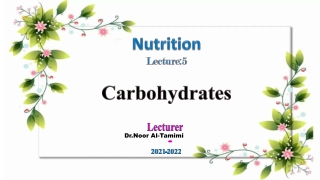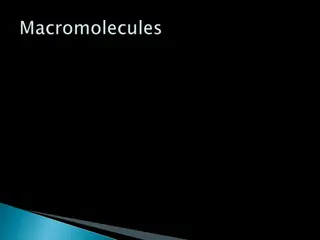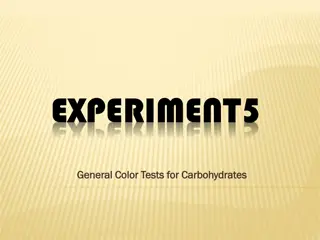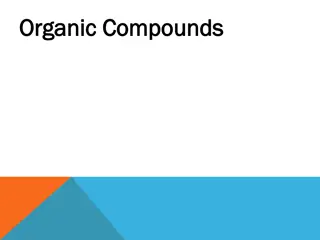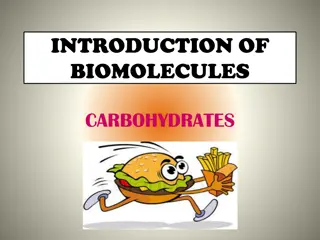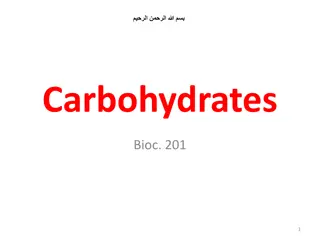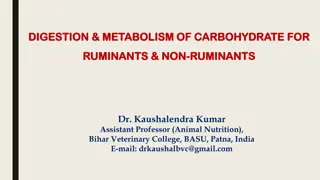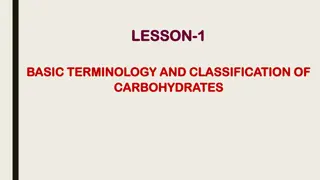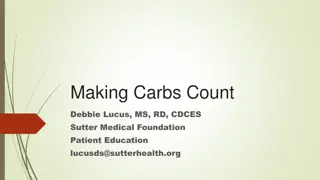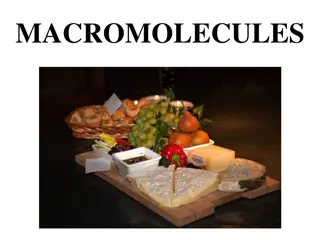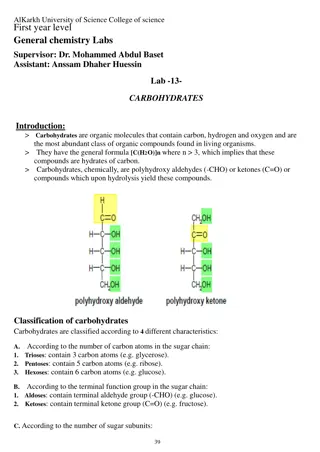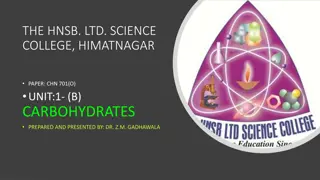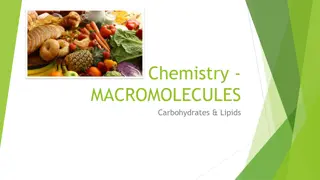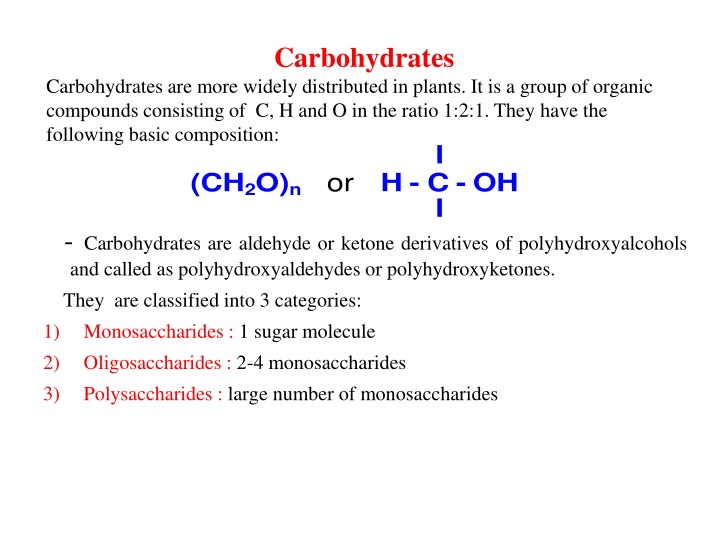
Carbohydrates in Plants
Learn about carbohydrates, the organic compounds found in plants with a basic composition of C, H, and O. Explore the categories of monosaccharides, oligosaccharides, and polysaccharides, and their essential roles in plant biology.
Download Presentation

Please find below an Image/Link to download the presentation.
The content on the website is provided AS IS for your information and personal use only. It may not be sold, licensed, or shared on other websites without obtaining consent from the author. If you encounter any issues during the download, it is possible that the publisher has removed the file from their server.
You are allowed to download the files provided on this website for personal or commercial use, subject to the condition that they are used lawfully. All files are the property of their respective owners.
The content on the website is provided AS IS for your information and personal use only. It may not be sold, licensed, or shared on other websites without obtaining consent from the author.
E N D
Presentation Transcript
Carbohydrates Carbohydrates are more widely distributed in plants. It is a group of organic compounds consisting of C, H and O in the ratio 1:2:1. Theyhave the following basic composition: I (CH2O)n or H-C-OH I - Carbohydrates are aldehyde or ketone derivatives of polyhydroxyalcohols and called as polyhydroxyaldehydes or polyhydroxyketones. They are classified into 3 categories: Monosaccharides : 1 sugar molecule Oligosaccharides : 2-4 monosaccharides Polysaccharides : large number of monosaccharides 1) 2) 3)
1) Monosaccharides - These are simplest carbohydrates and called as simple sugars. They can not be hydrolysed into any other simple carbohydrates. Sugars with aldehyde group- aldose sugars/aldoses. Sugars with ketone group- ketose sugars/ketoses. They have aldehyde or ketone group and hence reducing in nature. Sweet testing, crystalline and soluble in water. Based on number of carbons (3, 4, 5, 6, 7), monosaccharides are of following categories: Trioses : 3 C atoms (eg. Glyceraldehyde, Dihydroxyacetone) Tetroses : 4 C atoms (eg. Erythrose, Threose) Pentoses : 5 C atoms (eg. Ribose, Arabinose) Hexoses : 6 C atoms (eg. Glucose, Fructose) Heptoses :7 C atoms (eg. Sedoheptulose)
1) Monosaccharides : Aldoses (e.g., glucose) have an aldehyde group at one end. Ketoses (e.g., fructose) have a keto group, usually at C2. H O CH2OH C C O H C OH HO C H HO C H H C OH H C OH H C OH H C OH CH2OH CH2OH D-fructose D-glucose
2) Oligosaccharides -2, 3 or 4 molecules of monosaccharides joined by glycosidic bonds. - On hydrolysis, they yield monosaccharide units which may be similar or dissimilar. -Sweet testing, crystalline and soluble in water. Disaccharides :2 monosaccharide molecules (eg. Sucrose, Maltose, Lactose) Trisaccharides :3 monosaccharide molecules (eg. Raffinose, Gelatinose) Tetrasaccharides :4 monosaccharide molecules (eg. Stachyose) Disaccharides : i) Sucrose - Sucrose, common table sugar, is formed as a result of linking glucose and fructose and eliminating water molecule. - It is commonly called as cane sugar. It is widely distributed in higher plants, but commercial sources are sugarcane and sugarbeet. ii) Lactose - Lactose, milk sugar, is composed of glucose and galactose . - It is found in the milk of mammals.
3) Polysaccharides : Polymers consisting of large number of monosaccharide or disaccharide units. Homopolysaccharides : Similar sugar units (eg. Starch, Cellulose, Glycogen) Heteropolysaccharides : Dissimilar sugar units (eg. Pectin, Chitin, Hemicellulose) Polysaccharides are amorphous, tasteless and insoluble in water. They are of 2 types: i) Structural polysaccharides- eg. Cellulose, Pectin, Chitin, Hemicellulose, etc. ii) Storage polysaccharides- eg. Starch, Glycogen etc.)
1) Starch: - It is stored in the form of grains and used as food. - Made up of large number of glucose molecules. - Glucose units are arranged in 2 components; amylose & amylopectin: formed by condensation of -D-glucose. Amylose : It is in the form of straight chain consisting of 2,000 glucose units. Amylopectin : -It is branched structure having 1,00,000 glucose units. -Treating starch with hot water dissolves amylose, while amylopectin remains.
Amylose starch Straight chain that forms coils (1 4) linkage. Most common type of starch. CH2OH CH2OH CH2OH CH2OH O H O O H H O H H H H H H H H H H OH H H OH OH OH H O O O O H OH H OH H OH H OH O O O O O O O O O O O O O O O O O O O O O O O O
Amylopectin starch Branched structure. CH2OH CH2OH CH2OH CH2OH O O H O H H H O H H H H H H H H H H OH OH OH H H OH O O O O CH2 H OH H OH CH2OH H OH H OH CH2OH CH2OH O H O O H H O H H H H H H H H H H OH H H OH OH OH H O O O O H OH H OH H OH H OH (1 6) linkage at crosslink
2) Cellulose: Most abundant polysaccharide. Main constituent of cell-wall of autotrophic plants. Made up of 500-20,000 glucose units linked by (1 4) glycosidic linkages. CH2OH CH2OH O H CH2OH O H O H CH2OH H OH O H O H CH2OH H OH O H H O H H OH O H H O H H OH H OH H H O H OH H OH H H OH H H OH H OH
Biological functions of carbohydrates: 1) Storage of potential energy: Carbohydrates are the storage substances of potential energy. Starch is stored in grains and used as food. Glucose provides immediate energy needed for tissues. 2) Structural component: Cell-wall of plants and capsule of bacteria are carbohydrates. Monosaccharides are constituents of nucleic acids, coenzymes, etc. 3) Protein sparing function: Carbohydrate is used as source of energy as long as it is present in required quantity. This spares protein for building of tissues. When there is deficiency of calories, fat and then proteins are utilized for supplying energy. 4) Role in gastro-intestinal function: Indigestible substances like cellulose, hemicellulose and pectin provide roughage to food and thus help in peristaltic movements of digestive tract. Lactose promotes growth of desirable bacteria in small intestine, which synthesize certain vitamins.
5) Starch is used in manufacture of adhesives or glues for book binding. 6) Starch is used in paper making. 7) Cellulose is used for preparation of ice creams, cosmetics and medicines. 8) Cellulose can be used for production of rayon and transparent film called cellophane.
Biological functions of Starch: 1) Starch is stored mostly in the form of grains and it is stored as a food. 2) Clothing or laundry starch is prepared by mixing a vegetable starch in water. 3) Starch is used for paper making. 4) In industry, starch is used in gypsum wall board manufacturing process. 5) Starch is used in manufacture of adhasives or glues for book binding, wall paper adhasives, envelope adhasives, etc. 6) Starch is abundantly found in rice, wheat and other cereals, legumes, potatoes and bananas. 7) Starch is used to produce various bio-plastics, which are biodegradable. e.g. polylactic acid. 8) By the use of starch, bioethanol production is carried out by fermentation process.
Biological functions of Cellulose: 1) Cellulose is used in the industries for preparation of ice-creams, cosmetics and medicines. 2) Cellulose provides roughage to food and helps the peristaltic movements of the digestive tract. 3) Cellulose is found in cereals, fruits and vegetables such as legumes, nuts, peas, cabbage and apple skins. 4) Cellulose can also be used as a commodity, the main source being cotton, hemp and jute. 5) It can be used to produce rayon and transparent film called cellophane. 6) It is formed by photosynthesis and used for energy. 7) The artificial fibre is manufactured by dissolving cellulosic material in alkali and by extruding and coagulating the filaments.

